Abstract
As part of the World Health Organization's programme for the evaluation and testing of new insecticides, different types of dichlorvos dispenser were installed in experimental huts in Tanganyika for study of their effectiveness in killing Anopheles gambiae. It was found that satisfactorily high mosquito mortalities of 75% or more were maintained for one to two months after installation of a dispenser. Mortalities were about 10% higher in huts with grass roofs than in those with mud-lined roofs. The vapour toxicity was similar in the two types of hut, but the results of bio-assay tests on different types of surface showed that there was a residual contact effect of the insecticide as well as the fumigant effect; the lower mortalities in the mud-roofed huts may be due in part to removal or decomposition of the dichlorvos by the mud surface.
Measurements of blood pseudo-cholinesterase levels in persons who slept in the experimental huts gave no indication that the dichlorvos had any harmful effect on them.
Full text
PDF
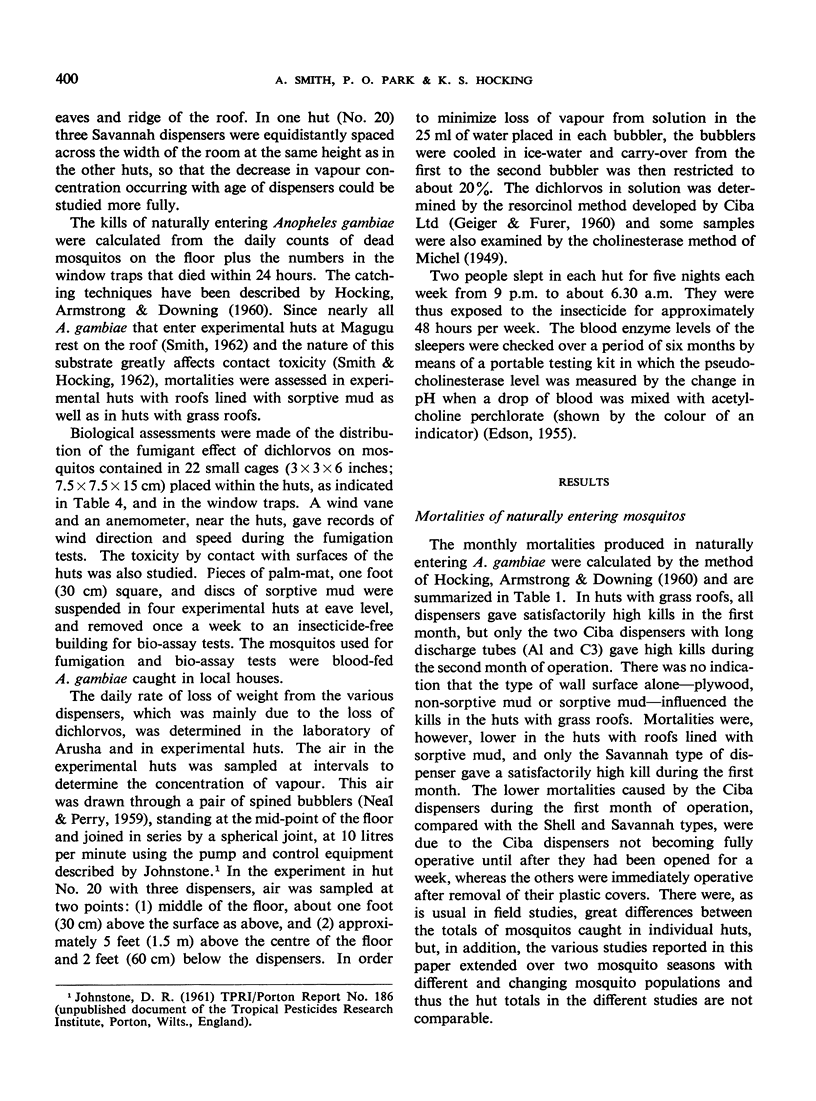
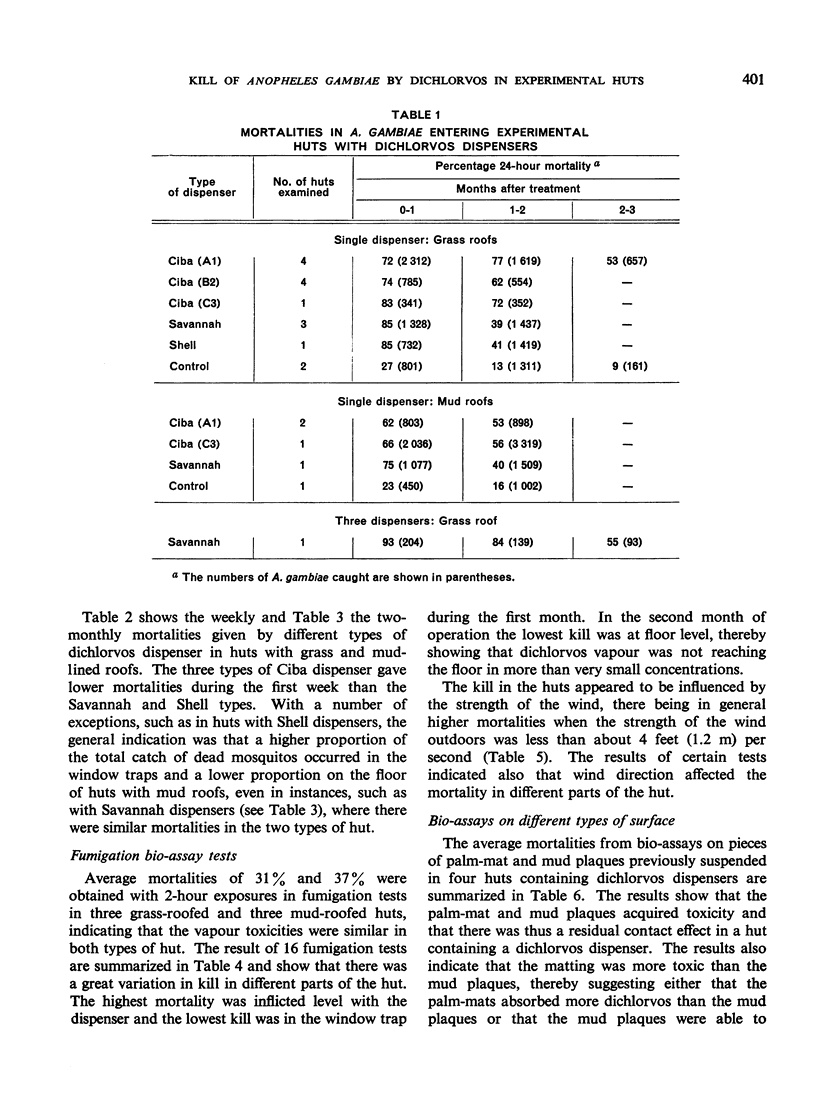
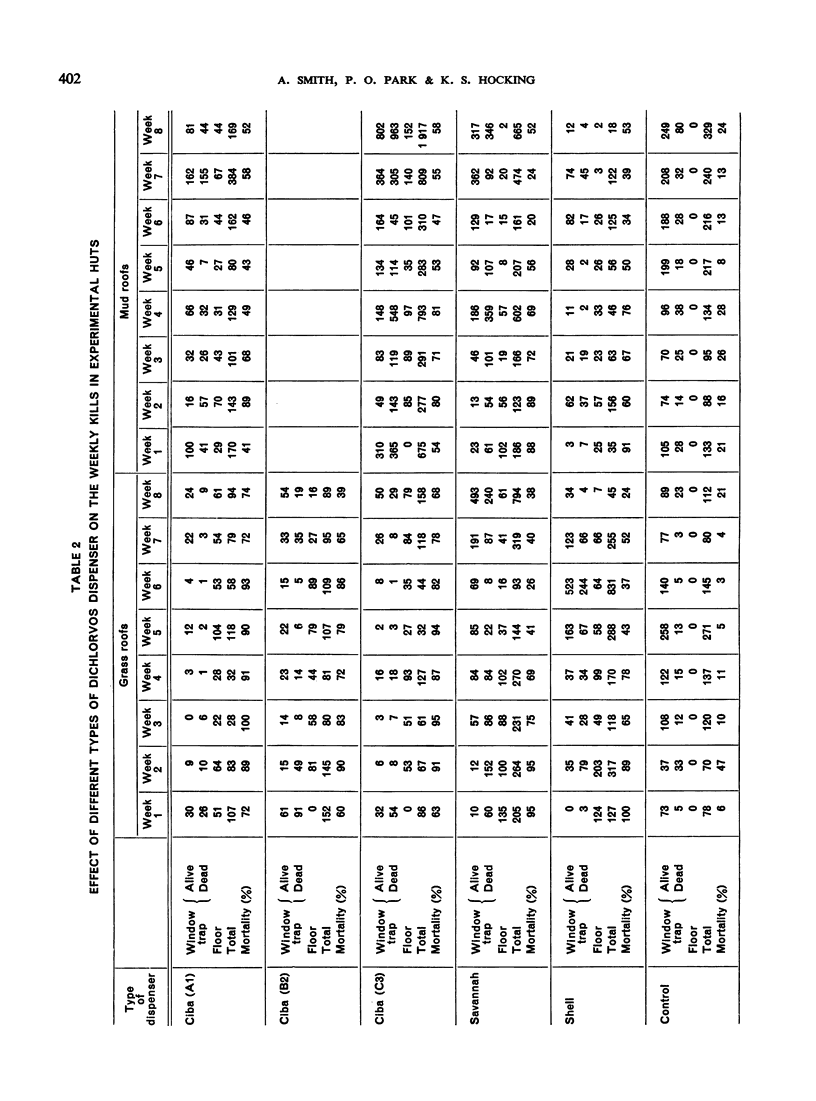

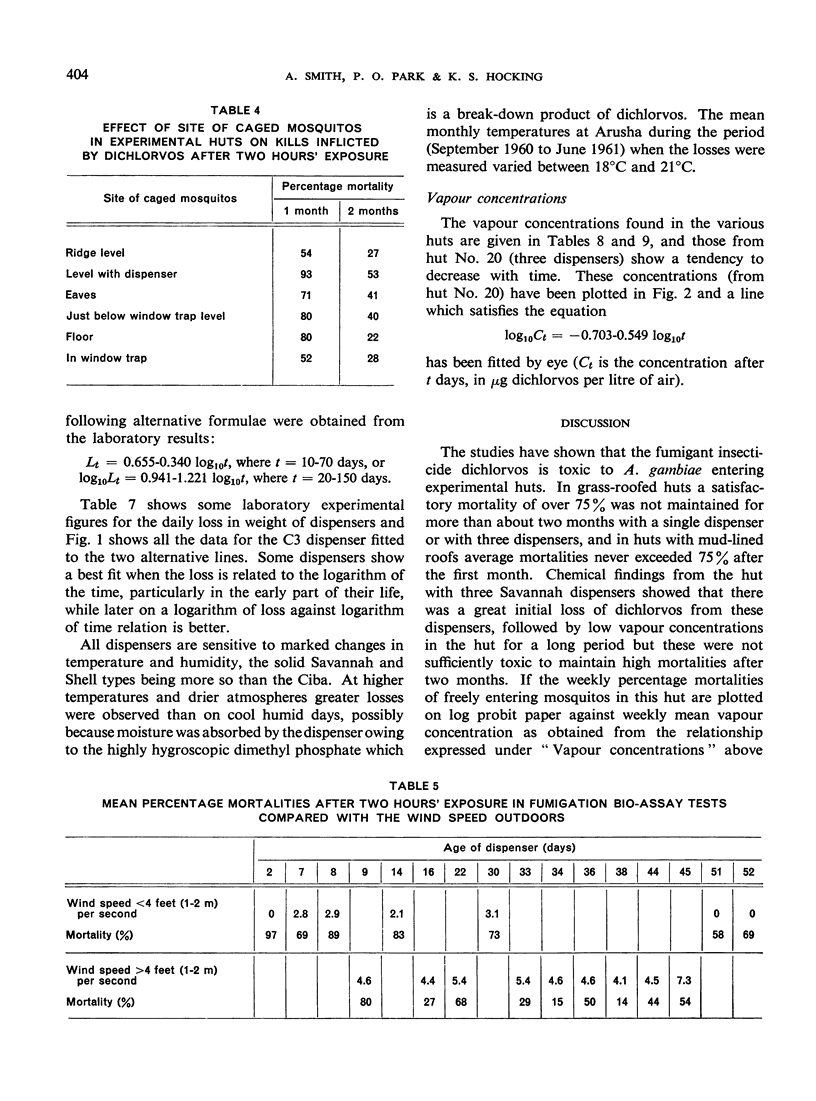
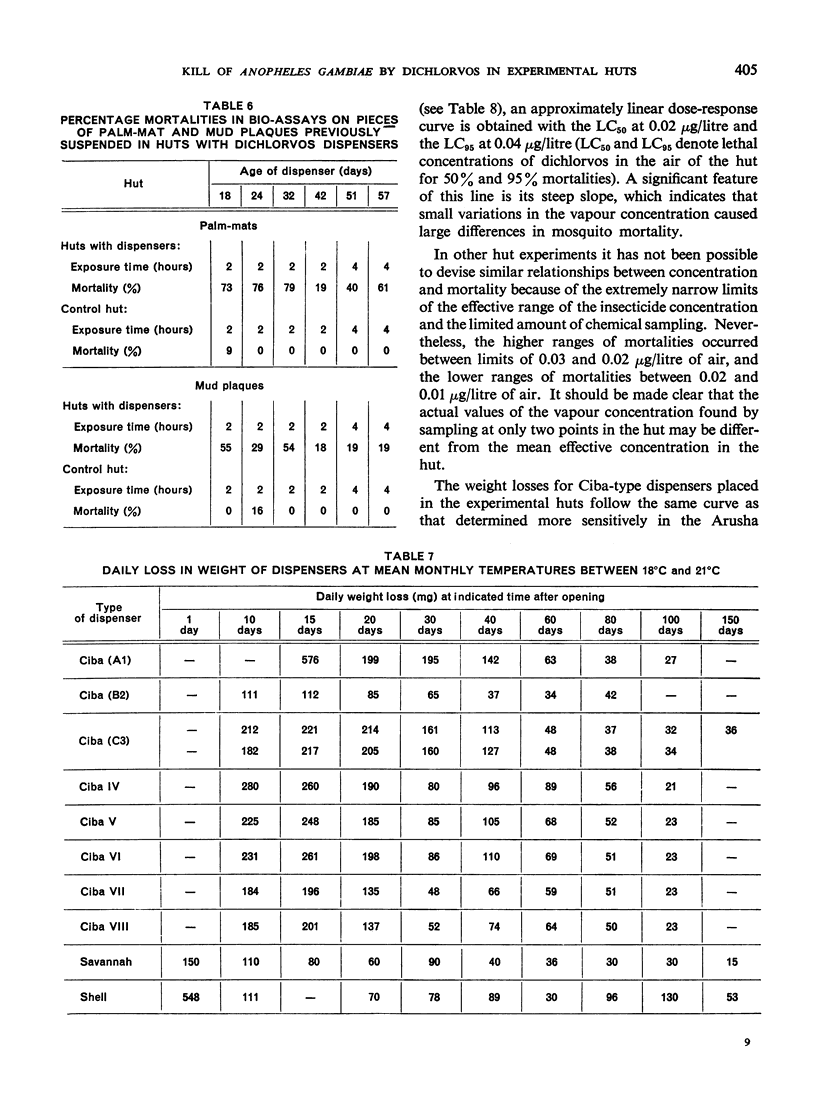
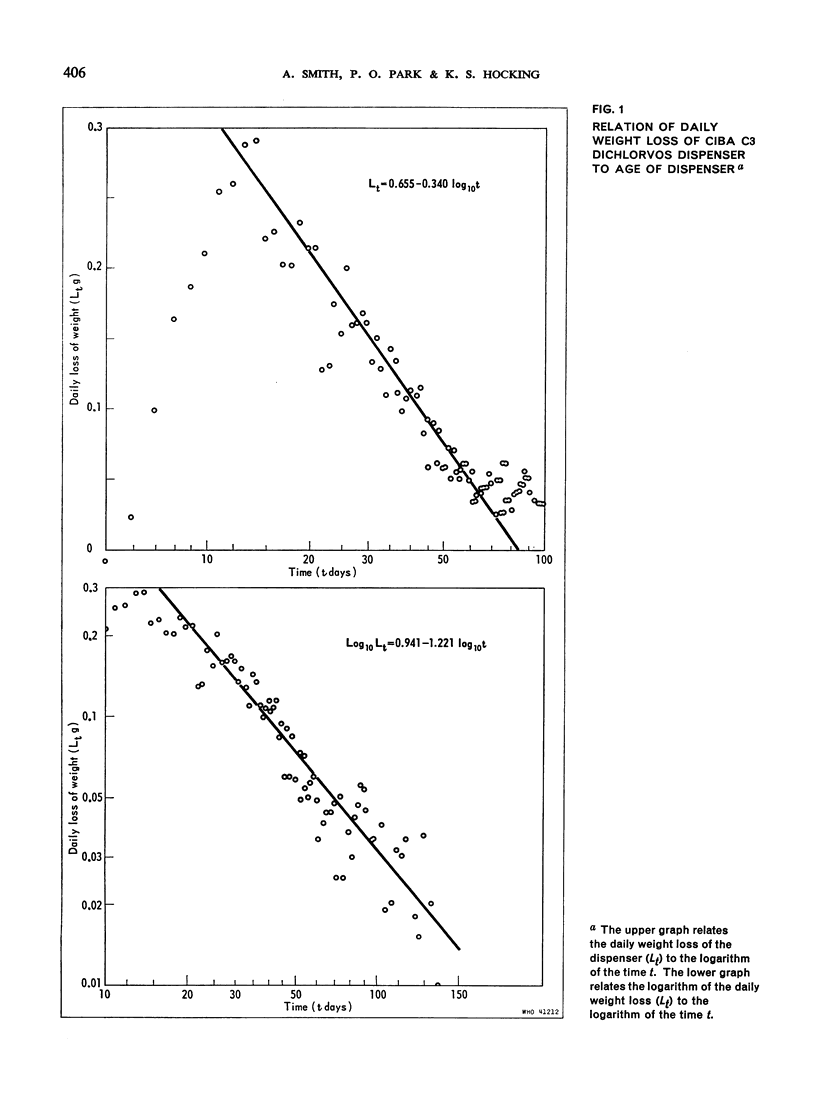
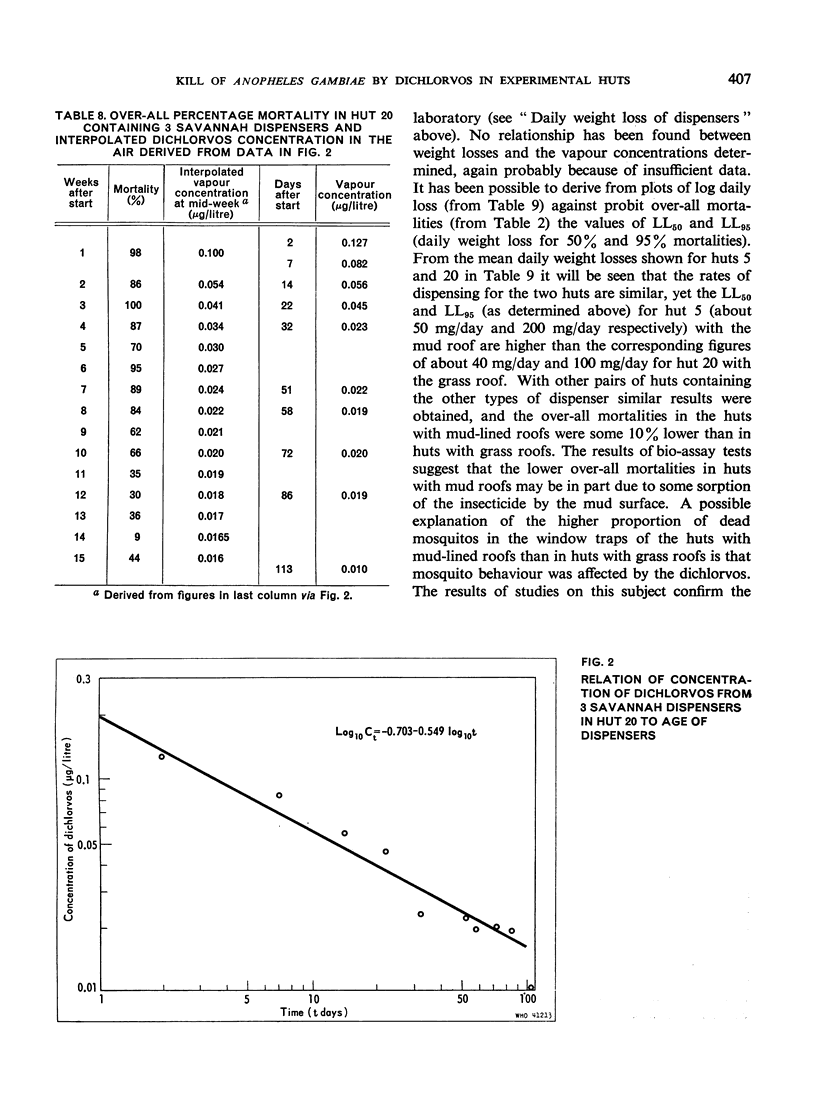
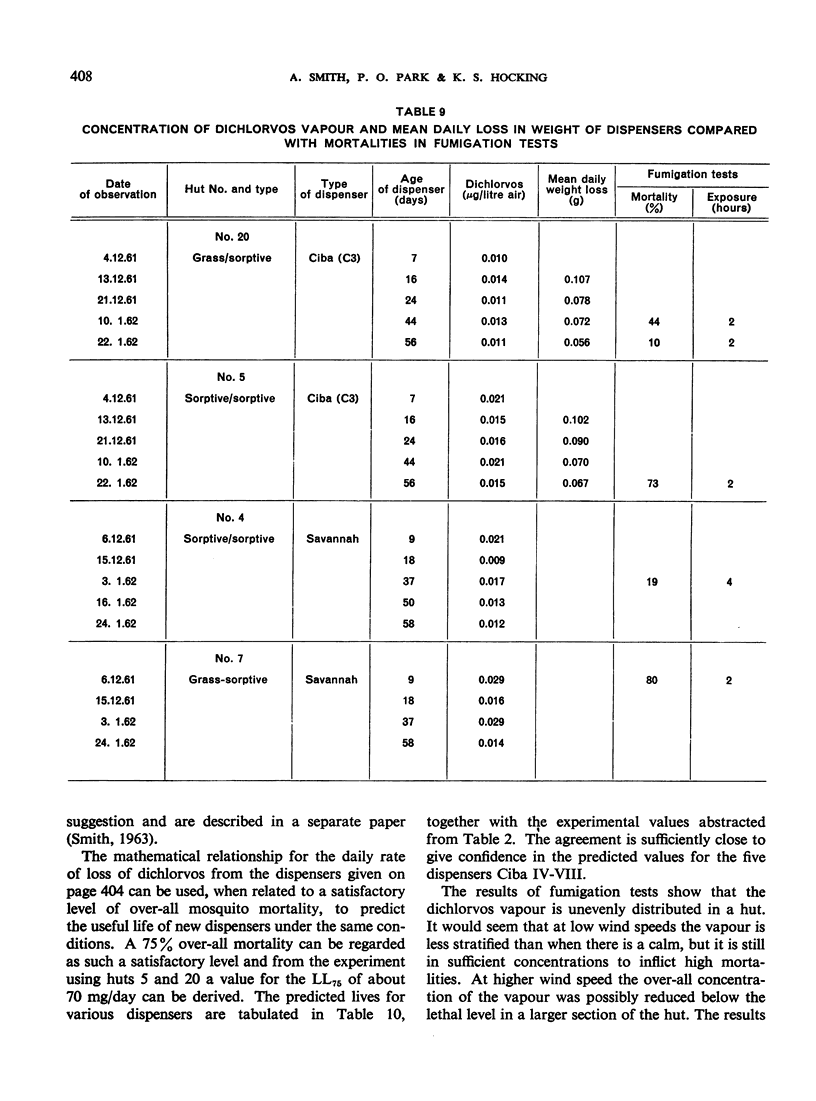
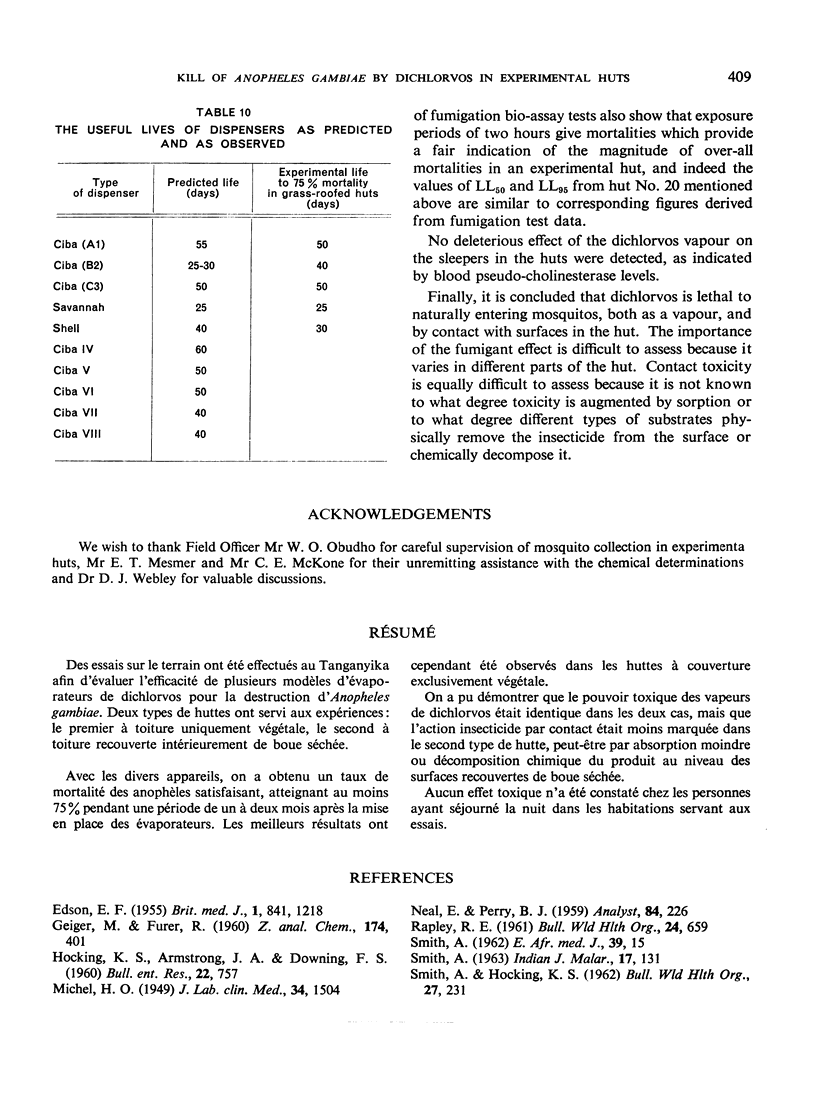
Selected References
These references are in PubMed. This may not be the complete list of references from this article.
- EDSON E. F. Agricultural pesticides. Br Med J. 1955 Apr 2;1(4917):841–844. doi: 10.1136/bmj.1.4917.841. [DOI] [PMC free article] [PubMed] [Google Scholar]
- HOCKING K. S., ARMSTRONG J. A., DOWNING F. S. Gamma-BHC/cereclor-a new, long-acting lindane formulation for malaria control. Bull World Health Organ. 1960;22:757–765. [PMC free article] [PubMed] [Google Scholar]
- RAPLEY R. E. Notes on the construction of experimental huts. Bull World Health Organ. 1961;24:659–663. [PMC free article] [PubMed] [Google Scholar]
- SMITH A., HOCKING K. S. Assessment of the residual toxicity to Anopheles gambiae of the organophosphorus insecticides Malathion and Baytex. Bull World Health Organ. 1962;27:231–238. [PMC free article] [PubMed] [Google Scholar]


